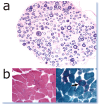Neuromuscular disorders in the cat: clinical approach to weakness
- PMID: 22063208
- PMCID: PMC10911292
- DOI: 10.1016/j.jfms.2011.09.005
Neuromuscular disorders in the cat: clinical approach to weakness
Abstract
Practical relevance: Weakness is a relatively common clinical presentation in feline medicine and can be caused by primary neuromuscular disease or by diseases of other body systems affecting the neuromuscular system secondarily. Successful work-up relies on a thorough clinical and neurological examination, and logical problem solving, based on an understanding of the underlying neuroanatomical and pathophysiological mechanisms.
Clinical challenges: Feline neuromuscular diseases can be a diagnostic challenge. On initial inspection, the presenting signs can mimic disorders of other body systems, particularly cardiovascular, pulmonary and orthopaedic disease, or may be confused with systemic illnesses. Additionally, because many different pathologies of the feline neuromuscular system converge to a similar clinical phenotype, further diagnostic steps such as electrodiagnostics, cerebrospinal fluid analysis, and muscle and nerve biopsies must be considered even after neuromuscular dysfunction has been identified.
Audience: This review provides a framework for the clinical approach to the weak cat and gives a practical summary of neuromuscular diseases for the general practitioner and specialist alike.
Evidence base: Many diseases affecting the feline neuromuscular system have been well described in the veterinary literature, mostly based on retrospective case reports and series. The evidence base for the treatment of feline neuromuscular diseases remains very limited.
Copyright © 2011 ISFM and AAFP. All rights reserved.
Figures






References
-
- Duysens J, Van de Crommert HW. Neural control of locomotion; the central pattern generator from cats to humans. Gait Posture 1998; 7: 131–41. - PubMed
-
- Martin JH. The corticospinal system: from development to motor control. Neuroscientist 2005; 11: 161–73. - PubMed
-
- Muir GD. Early ontogeny of locomotor behaviour: a comparison between altricial and precocial animals. Brain Res Bull 2000; 53: 719–26. - PubMed
-
- Villablanca JR, Olmstead CE. Neurological development of kittens. Dev Psychobiol 1979; 12: 101–27. - PubMed
-
- Ariano MA, Armstrong RB, Edgerton VR. Hindlimb muscle fiber populations of five mammals. J Histochem Cytochem 1973; 21: 51–55. - PubMed
Publication types
MeSH terms
LinkOut - more resources
Full Text Sources
Medical
Miscellaneous

